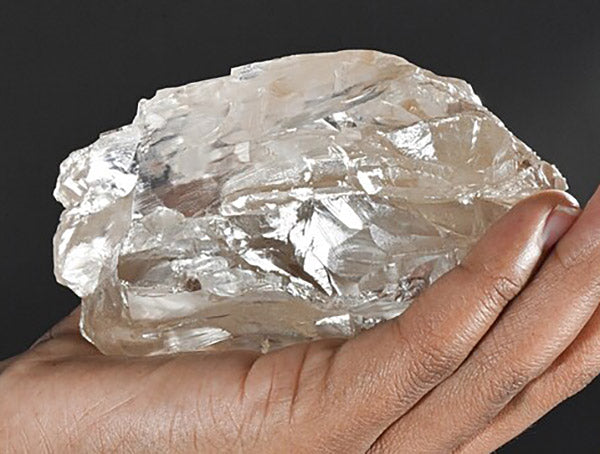Lucara Diamond Corp. CEO William Lamb recently sang the praises of the company's Mega-Diamond Recovery (MDR) system that's been yielding amazing finds at the company's Karowe Mine in Botswana.
Designed to identify and preserve the "biggest of the big," the technology was credited with securing the 2,492-carat stone discovered by the company on August 19. It's the second-largest rough diamond every discovered. Only the 3,106-carat Cullinan, discovered in South Africa in 1905, was larger.
During a recent podcast, Lamb told Rapaport senior analyst Joshua Freedman how Lucara learned from lessons of the past. He said the company started working on its MDR system just after the discovery of the 1,109-carat Lesedi La Rona in November of 2015. While that find was monumental, it was disturbing to learn that the stone was originally much larger. A 374-carat chunk, retrieved during the recovery process, fit perfectly into the main piece.
Lamb and his team believed the Lesedi La Rona may have been 2,000 carats or larger in its original state.
"If you ever came to our plant and you stood on the top of the feed conveyor, you would see material dropping off," he said. "A stone the size of the Lesedi diamond might actually survive the fall… but it's the 300 millimeter rock that fell onto the Lesedi that could have cleaved this piece off."
Lucara's mission was to recover mega-diamonds before there was any chance of damaging them. The system ejects the large rough gems from the processing stream and redirects them to a sort box to be inspected later.
"In 2017, we installed two new XRT (X-ray transmission) machines, upfront, just off to the primary crusher," Lamb said. "Up to a 5,000-carat stone could be recovered from the machines. We are looking for the biggest of the big."
Lamb told Freedman that the quality of the 2,492-carat diamond was still being accessed and added that it's still not clear how this "legacy" stone (defined as being valued at $10 million or more) will be sold.
Previously discovered legacy stones have been cut and polished into smaller stones, but this one still has a chance of being preserved intact.
Lamb left open the possibility that "the largest stone in living memory" could be sold to a museum or a collector.
Lamb recalled: "When we would pull out the Lesedi, we would say, 'There's not a person alive who has seen a stone of this size.' This is just that next step up."
The CEO also noted what the 2,492-carat rough gem means to Botswana and the natural diamond industry. For Botswana, the diamond translates into new revenue for roads and schools.
For the diamond industry, it's an opportunity to differentiate natural diamonds from their lab-grown counterparts.
“Let’s bring more people in so that they can actually understand what a natural diamond represents, what it means for Botswana, how this stone… was brought into the light,” Lamb told Freedman. “A lot of people don’t understand that a rough diamond has a tumultuous task of getting to surface. It travels between 200 and 500 kilometers in a magma tube at 1,000 degrees Celsius to get to surface. It is a phenomenon that we can… even recover these stones without them being destroyed.”
Check out the full Rapaport Diamond Podcast at this link.
Credit: Image courtesy of CNW Group/Lucara Diamond Corp.


